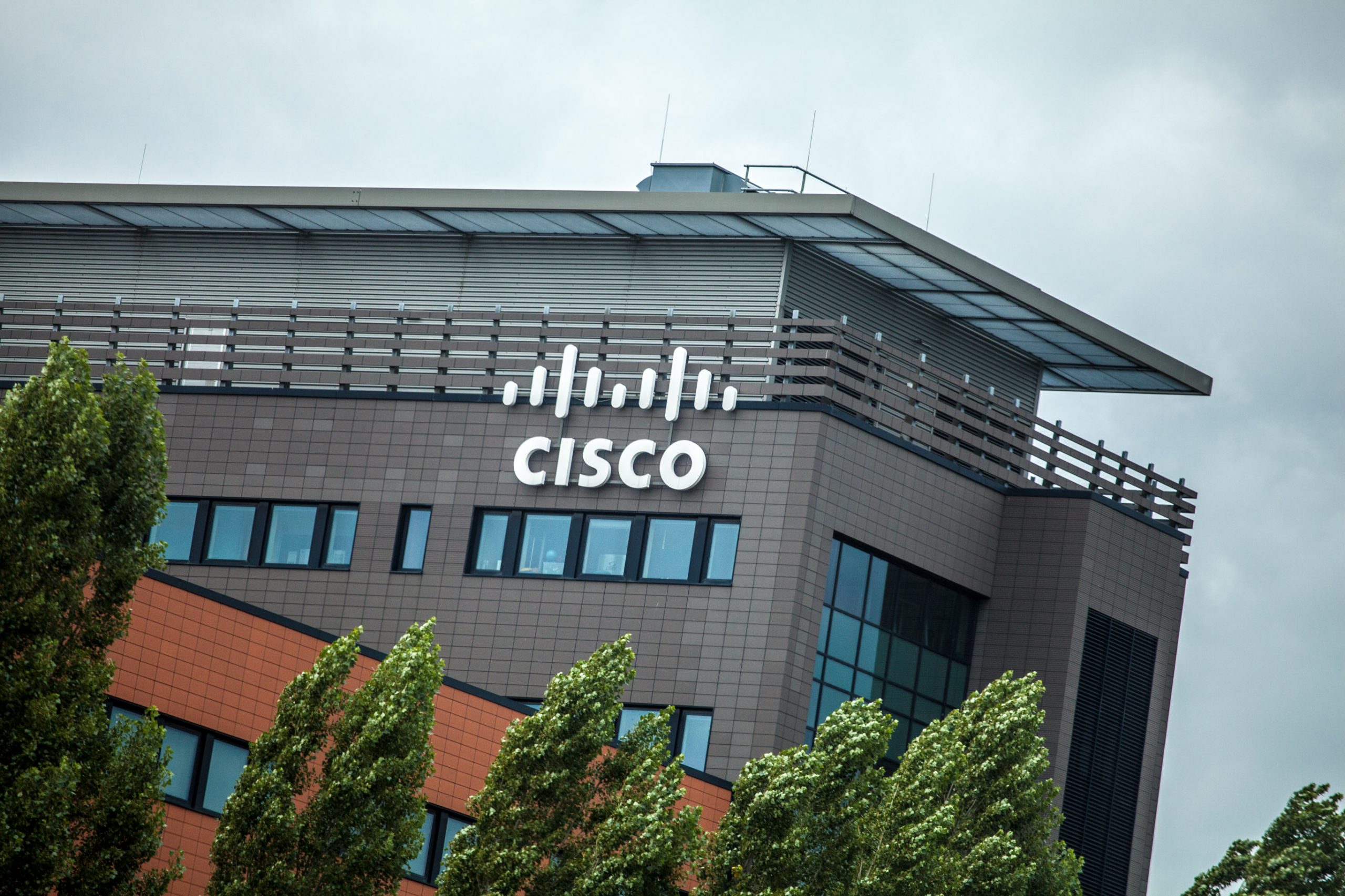TECHNOLOGY
The Secrets of Smart IT Support Outsourcing: 6 Tips for Success

Do you need the help of an IT Support Outsourcing team but are not sure where to start?
Choosing the right support provider for your company can be difficult to navigate and overwhelming. It is important that you select a vendor who understands your needs, provides reliable service, and has a workflow tailored to fit your company’s strategy. In this article, we will go over 6 tips for successful IT support outsourcing that will make it much simpler for you to find the best partner. With these strategies, you should have no problem finding an ideal organization that can effectively address all your tech concerns without breaking the bank in terms of budget or time spent managing the process.

Understand the Company’s Needs and Goals
In today’s fast-paced business world, having a reliable IT system is essential. However, not all companies have the resources or expertise to handle IT support in-house. This is where outsourcing comes into play. To provide effective IT support outsourcing, it is important to have a clear understanding of what your company needs from these services. This could include anything from regular maintenance to network security measures. By understanding your company’s needs and goals, such as 24/7 remote and on-site IT support, you’ll be able to choose a provider that can deliver the right solutions to meet those objectives. With the right IT support in place, your company can focus on its core business offerings, secure in the knowledge that its digital infrastructure is being managed by experts.
Consider the Cost of Outsourcing
When it comes to outsourcing, it’s important to understand the value of the services you’ll be receiving. IT support services are essential for any business that relies on technology to function smoothly. But, it’s also important to consider the cost of outsourcing and how much you’re willing to spend. A budget must be set before making any decisions. Do you want to spend a little extra for top-of-the-line support services or do you prefer something more affordable? It’s important to weigh the pros and cons of each option before making the final call. Furthermore, conducting a thorough cost-benefit analysis and evaluating the long-term impact on your business’s financial health is crucial when making the ultimate choice between premium, high-cost support services and more budget-friendly alternatives. In the end, the right decision is the one that works best for your business and its unique needs.
Research Potential Providers
When it comes to finding a provider for any service, it’s essential to do your research beforehand to ensure that you’re selecting a reliable and reputable company. No one wants to spend their hard-earned money on a service that ends up being subpar. Take the time to read reviews and feedback from previous customers, look into their credentials and experience, and ask around for recommendations. It may take a bit of effort and time to conduct preliminary research, but in the end, it’s worth it to have peace of mind knowing that you’ve chosen a provider that you can trust. Not all IT support providers are created equal. Some may specialize in certain industries while others offer more general services. It’s important to find a provider who has experience and expertise in your specific industry, as they will have a better understanding of your company’s
Develop a Plan of Action
Communication is key when working with an IT support provider. Whether you’re working with an in-house team or an outsourced company, it’s essential to develop a plan of action that clearly outlines your goals and expectations. This will help ensure that everyone is on the same page and working towards the same outcomes. Your plan should include specific objectives, timelines, and metrics for success. Consider factors such as response time, issue resolution rates, and customer satisfaction levels. Building a strong communication framework with your IT support provider will not only improve efficiency and productivity, but it will also foster a positive working relationship that benefits everyone involved.
Monitor Performance Regularly
As your business grows, so does the need for reliable IT support. However, it’s not enough to simply find a provider and assume they’re doing their job effectively. To ensure your investment in IT is actually contributing to the success of your business, it’s important to monitor your provider’s performance regularly. Selecting an IT support provider is not a one-time decision. It’s important to regularly review and evaluate their performance to ensure that they are meeting your company’s needs. This could include conducting periodic check-ins, keeping an eye on key metrics, like response times and issue resolution rates, and having open and honest communication with your provider. By tracking progress and addressing any concerns along the way, you can work together with your IT support to make sure your business technology is running at its best.
Know When to Adjust
As a business owner, outsourcing IT support can be a game-changer, freeing up precious time to focus on your business growth. However, it’s crucial to recognize when the partnership is not meeting your expectations. If your current outsourced IT support provider is failing to deliver the services that you need, it’s time to consider switching providers or adjusting your plan of action. Remember, your IT support provider is a crucial piece of the puzzle, and finding the right partner can make all the difference. Don’t settle for anything less than the best support for your business. Knowing when to adjust can save you time and money in the long run.

Outsourcing IT support can be a great way to improve efficiency and save money. By understanding your needs, researching potential providers, establishing a plan of action, monitoring performance, and making adjustments as needed you can make sure you are getting the most out of your IT support outsourcing. Keep in mind that while outsourcing can provide significant benefits to organizations, it is not a “one size fits all” solution and should be tailored to meet the specific needs of each organization. Therefore, proper planning and research are essential to ensure that an effective IT support strategy is in place that will help achieve your business goals.
TECHNOLOGY
Next-gen chips, Amazon Q, and speedy S3

AWS re:Invent, which has been taking place from November 27 and runs to December 1, has had its usual plethora of announcements: a total of 21 at time of print.
Perhaps not surprisingly, given the huge potential impact of generative AI – ChatGPT officially turns one year old today – a lot of focus has been on the AI side for AWS’ announcements, including a major partnership inked with NVIDIA across infrastructure, software, and services.
Yet there has been plenty more announced at the Las Vegas jamboree besides. Here, CloudTech rounds up the best of the rest:
Next-generation chips
This was the other major AI-focused announcement at re:Invent: the launch of two new chips, AWS Graviton4 and AWS Trainium2, for training and running AI and machine learning (ML) models, among other customer workloads. Graviton4 shapes up against its predecessor with 30% better compute performance, 50% more cores and 75% more memory bandwidth, while Trainium2 delivers up to four times faster training than before and will be able to be deployed in EC2 UltraClusters of up to 100,000 chips.
The EC2 UltraClusters are designed to ‘deliver the highest performance, most energy efficient AI model training infrastructure in the cloud’, as AWS puts it. With it, customers will be able to train large language models in ‘a fraction of the time’, as well as double energy efficiency.
As ever, AWS offers customers who are already utilising these tools. Databricks, Epic and SAP are among the companies cited as using the new AWS-designed chips.
Zero-ETL integrations
AWS announced new Amazon Aurora PostgreSQL, Amazon DynamoDB, and Amazon Relational Database Services (Amazon RDS) for MySQL integrations with Amazon Redshift, AWS’ cloud data warehouse. The zero-ETL integrations – eliminating the need to build ETL (extract, transform, load) data pipelines – make it easier to connect and analyse transactional data across various relational and non-relational databases in Amazon Redshift.
A simple example of how zero-ETL functions can be seen is in a hypothetical company which stores transactional data – time of transaction, items bought, where the transaction occurred – in a relational database, but use another analytics tool to analyse data in a non-relational database. To connect it all up, companies would previously have to construct ETL data pipelines which are a time and money sink.
The latest integrations “build on AWS’s zero-ETL foundation… so customers can quickly and easily connect all of their data, no matter where it lives,” the company said.
Amazon S3 Express One Zone
AWS announced the general availability of Amazon S3 Express One Zone, a new storage class purpose-built for customers’ most frequently-accessed data. Data access speed is up to 10 times faster and request costs up to 50% lower than standard S3. Companies can also opt to collocate their Amazon S3 Express One Zone data in the same availability zone as their compute resources.
Companies and partners who are using Amazon S3 Express One Zone include ChaosSearch, Cloudera, and Pinterest.
Amazon Q
A new product, and an interesting pivot, again with generative AI at its core. Amazon Q was announced as a ‘new type of generative AI-powered assistant’ which can be tailored to a customer’s business. “Customers can get fast, relevant answers to pressing questions, generate content, and take actions – all informed by a customer’s information repositories, code, and enterprise systems,” AWS added. The service also can assist companies building on AWS, as well as companies using AWS applications for business intelligence, contact centres, and supply chain management.
Customers cited as early adopters include Accenture, BMW and Wunderkind.
Want to learn more about cybersecurity and the cloud from industry leaders? Check out Cyber Security & Cloud Expo taking place in Amsterdam, California, and London. Explore other upcoming enterprise technology events and webinars powered by TechForge here.
TECHNOLOGY
HCLTech and Cisco create collaborative hybrid workplaces

Digital comms specialist Cisco and global tech firm HCLTech have teamed up to launch Meeting-Rooms-as-a-Service (MRaaS).
Available on a subscription model, this solution modernises legacy meeting rooms and enables users to join meetings from any meeting solution provider using Webex devices.
The MRaaS solution helps enterprises simplify the design, implementation and maintenance of integrated meeting rooms, enabling seamless collaboration for their globally distributed hybrid workforces.
Rakshit Ghura, senior VP and Global head of digital workplace services, HCLTech, said: “MRaaS combines our consulting and managed services expertise with Cisco’s proficiency in Webex devices to change the way employees conceptualise, organise and interact in a collaborative environment for a modern hybrid work model.
“The common vision of our partnership is to elevate the collaboration experience at work and drive productivity through modern meeting rooms.”
Alexandra Zagury, VP of partner managed and as-a-Service Sales at Cisco, said: “Our partnership with HCLTech helps our clients transform their offices through cost-effective managed services that support the ongoing evolution of workspaces.
“As we reimagine the modern office, we are making it easier to support collaboration and productivity among workers, whether they are in the office or elsewhere.”
Cisco’s Webex collaboration devices harness the power of artificial intelligence to offer intuitive, seamless collaboration experiences, enabling meeting rooms with smart features such as meeting zones, intelligent people framing, optimised attendee audio and background noise removal, among others.
Want to learn more about cybersecurity and the cloud from industry leaders? Check out Cyber Security & Cloud Expo taking place in Amsterdam, California, and London. Explore other upcoming enterprise technology events and webinars powered by TechForge here.
TECHNOLOGY
Canonical releases low-touch private cloud MicroCloud

Canonical has announced the general availability of MicroCloud, a low-touch, open source cloud solution. MicroCloud is part of Canonical’s growing cloud infrastructure portfolio.
It is purpose-built for scalable clusters and edge deployments for all types of enterprises. It is designed with simplicity, security and automation in mind, minimising the time and effort to both deploy and maintain it. Conveniently, enterprise support for MicroCloud is offered as part of Canonical’s Ubuntu Pro subscription, with several support tiers available, and priced per node.
MicroClouds are optimised for repeatable and reliable remote deployments. A single command initiates the orchestration and clustering of various components with minimal involvement by the user, resulting in a fully functional cloud within minutes. This simplified deployment process significantly reduces the barrier to entry, putting a production-grade cloud at everyone’s fingertips.
Juan Manuel Ventura, head of architectures & technologies at Spindox, said: “Cloud computing is not only about technology, it’s the beating heart of any modern industrial transformation, driving agility and innovation. Our mission is to provide our customers with the most effective ways to innovate and bring value; having a complexity-free cloud infrastructure is one important piece of that puzzle. With MicroCloud, the focus shifts away from struggling with cloud operations to solving real business challenges” says
In addition to seamless deployment, MicroCloud prioritises security and ease of maintenance. All MicroCloud components are built with strict confinement for increased security, with over-the-air transactional updates that preserve data and roll back on errors automatically. Upgrades to newer versions are handled automatically and without downtime, with the mechanisms to hold or schedule them as needed.
With this approach, MicroCloud caters to both on-premise clouds but also edge deployments at remote locations, allowing organisations to use the same infrastructure primitives and services wherever they are needed. It is suitable for business-in-branch office locations or industrial use inside a factory, as well as distributed locations where the focus is on replicability and unattended operations.
Cedric Gegout, VP of product at Canonical, said: “As data becomes more distributed, the infrastructure has to follow. Cloud computing is now distributed, spanning across data centres, far and near edge computing appliances. MicroCloud is our answer to that.
“By packaging known infrastructure primitives in a portable and unattended way, we are delivering a simpler, more prescriptive cloud experience that makes zero-ops a reality for many Industries.“
MicroCloud’s lightweight architecture makes it usable on both commodity and high-end hardware, with several ways to further reduce its footprint depending on your workload needs. In addition to the standard Ubuntu Server or Desktop, MicroClouds can be run on Ubuntu Core – a lightweight OS optimised for the edge. With Ubuntu Core, MicroClouds are a perfect solution for far-edge locations with limited computing capabilities. Users can choose to run their workloads using Kubernetes or via system containers. System containers based on LXD behave similarly to traditional VMs but consume fewer resources while providing bare-metal performance.
Coupled with Canonical’s Ubuntu Pro + Support subscription, MicroCloud users can benefit from an enterprise-grade open source cloud solution that is fully supported and with better economics. An Ubuntu Pro subscription offers security maintenance for the broadest collection of open-source software available from a single vendor today. It covers over 30k packages with a consistent security maintenance commitment, and additional features such as kernel livepatch, systems management at scale, certified compliance and hardening profiles enabling easy adoption for enterprises. With per-node pricing and no hidden fees, customers can rest assured that their environment is secure and supported without the expensive price tag typically associated with cloud solutions.
Want to learn more about cybersecurity and the cloud from industry leaders? Check out Cyber Security & Cloud Expo taking place in Amsterdam, California, and London. Explore other upcoming enterprise technology events and webinars powered by TechForge here.
-

 PPC5 days ago
PPC5 days ago10 Most Effective Franchise Marketing Strategies
-

 SEARCHENGINES6 days ago
SEARCHENGINES6 days agoGoogle Needs Very Few Links To Rank Pages; Links Are Less Important
-

 SEO6 days ago
SEO6 days agoHow to Become an SEO Lead (10 Tips That Advanced My Career)
-

 MARKETING6 days ago
MARKETING6 days agoHow to Use AI For a More Effective Social Media Strategy, According to Ross Simmonds
-

 PPC6 days ago
PPC6 days agoBiggest Trends, Challenges, & Strategies for Success
-

 SEARCHENGINES4 days ago
SEARCHENGINES4 days agoGoogle Won’t Change The 301 Signals For Ranking & SEO
-

 AFFILIATE MARKETING7 days ago
AFFILIATE MARKETING7 days agoSet Your Team up for Success and Let Them Browse the Internet Faster
-

 SEARCHENGINES5 days ago
SEARCHENGINES5 days agoGoogle Again Says Ignore Link Spam Especially To 404 Pages









